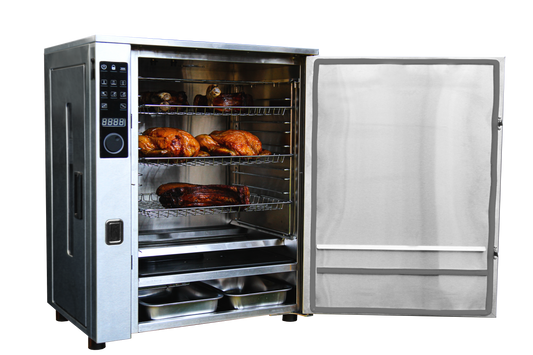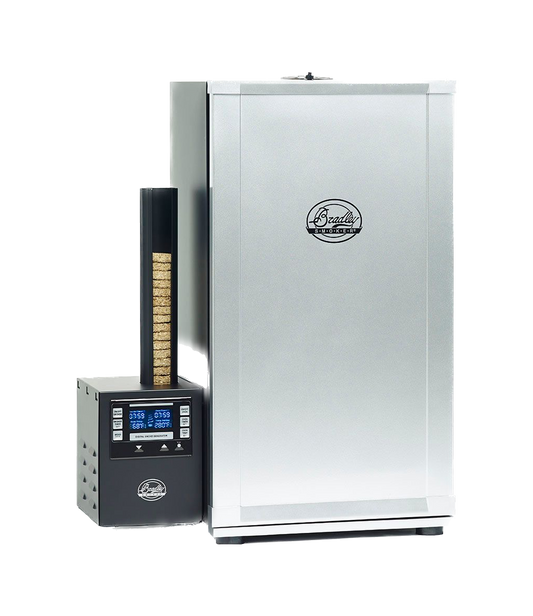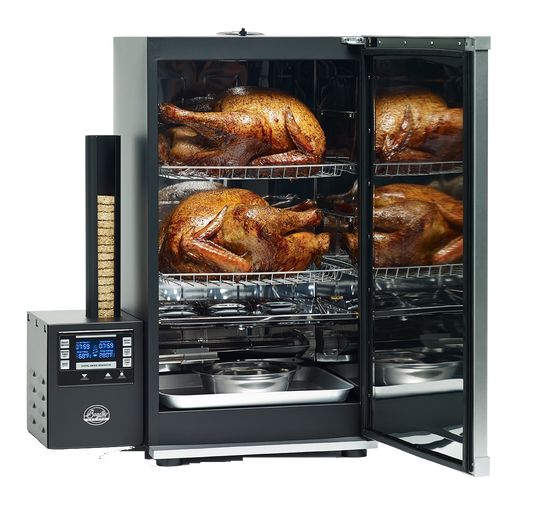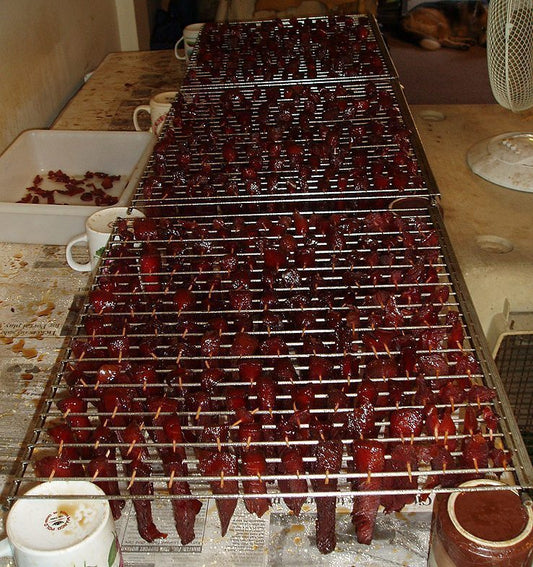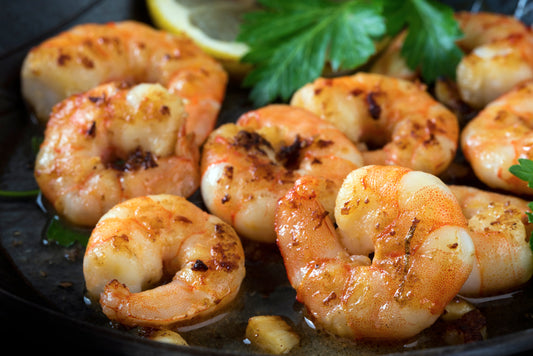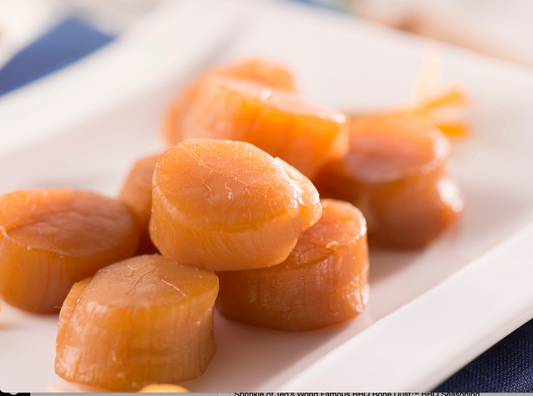
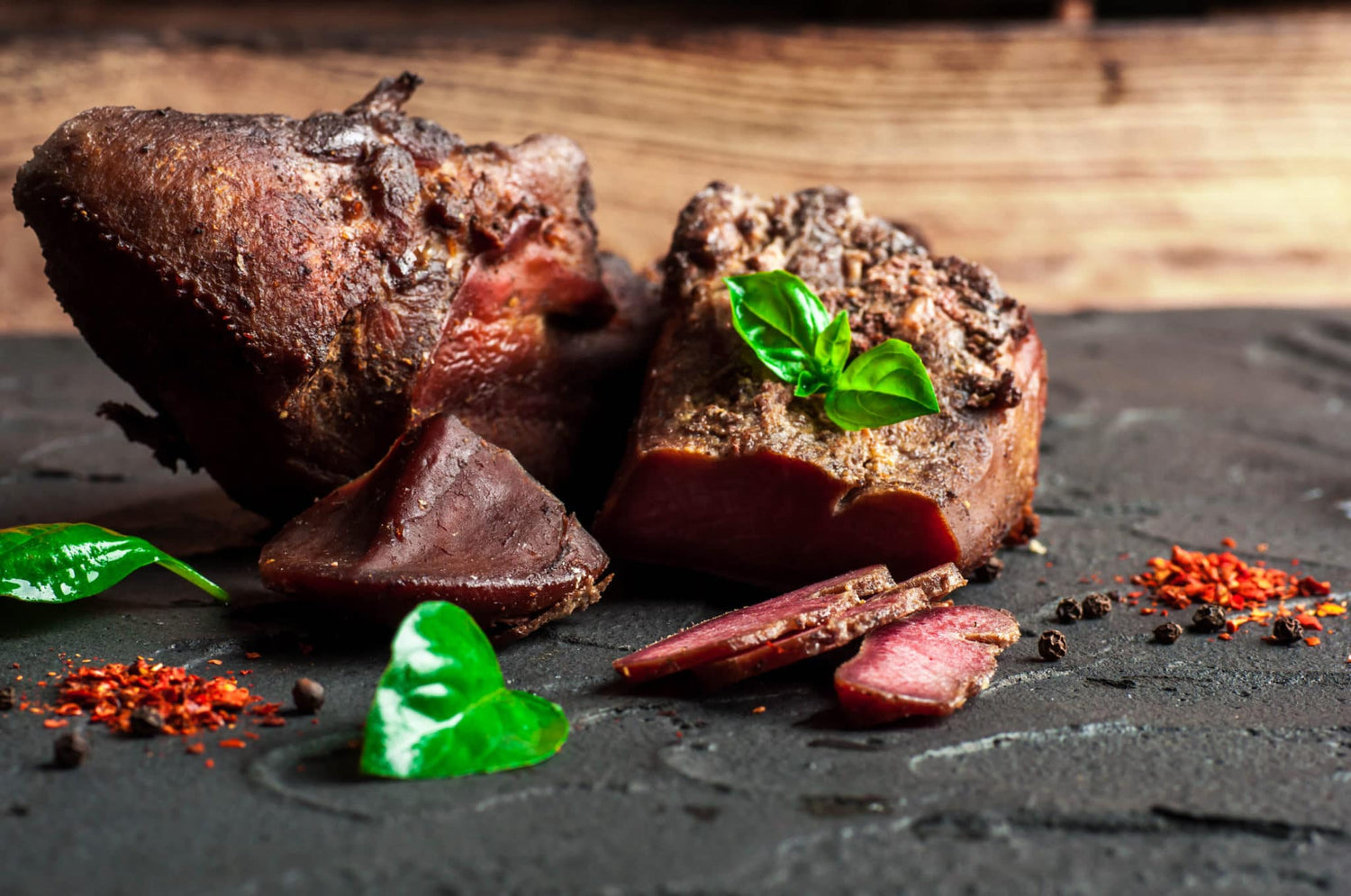
Smoked Beef Tongue
Mustard and horseradish are traditional dressings for tongue, but you may find that these condiments are too harsh for the subtle flavours that are present in this product.
Ingredients
For 5 lbs. (2.5 kg) of tongue:
3 Tbsp Bradley Sugar Cure (do not use more than this amount)
1 ½ Tsp (7.5 ml) onion powder
1 Tsp (5 ml) oregano
1 Tsp (5 ml) black pepper
1 Tsp (5 ml) garlic powder
½ Tsp (2.5 ml) red pepper or cayenne
2 Shredded bay leaves (Do not mix with ingredients listed above.)
Note: If the meat weighs either more or less than 5 pounds (2.25 kg), the amount of cure mix applied must be proportional to that weight. For example, if the weight of the meat is 2 ½ pounds (1.15 kg), then each ingredient, including the Bradley Cure, needs to be cut in half.
Preparation
The Tongue:
Any size of beef tongue can be used, but tongue lovers claim that tongues weighing less than 3 pounds (1,400 g) are best. Another consideration is that small tongues cure faster than large ones. Frozen tongues work just as well as fresh ones.
Scrub the tongue very well with a vegetable brush under lukewarm water.
Drain, and refrigerate it while preparing the cure.
It is very important to pierce the tongue thoroughly. To get even better cure penetration, slice some of the skin off the top of the tongue where the tongue has the most bulk. Removal of some of the skin in this area will greatly improve the cure penetration.
Weigh the tongue. Prepare, calculate, and measure the required amount of curing mixture.
Place the tongue in a curing container having a tight-fitting lid.
Sprinkle on the curing mixture, and rub the meat well to ensure uniform distribution of the cure.
Cut the required amount of bay leaf into very thin strips (scissors work well for this).
Sprinkle the bay leaf strips on the tongue, and rub again.
Cover, and refrigerate the tongue. The refrigerator temperature should be set between 34° and 40°F (2.2° to 4.4°C).
Overhaul the tongue after about 12 hours of curing (rub the tongue to redistribute the cure). When it is being overhauled, re-apply any juices that may have oozed from the meat.
Overhaul the tongue once a day for the first week, and then overhaul it every other day until the required curing time has elapsed.
Cooking – Option 1:
Rinse the cured tongue very well in lukewarm water.
Put it in a sturdy and watertight plastic bag (two plastic bags, one inside the other, are even better).
Remove as much air as possible.
Seal the bag(s) tightly with a wire bread-bag tie, and cook in water heated to 200°F (93°C). Make sure that the tongue is pressed below the surface of the hot water.
CAUTION: If the water reaches the boiling point, the bags may balloon and burst.
Cook from 1 hour per pound (450 g) to 1 1/4 hour per pound. The longer time will result in a very tender product; the shorter time will produce a tongue with a little more resistance to the bite.
Open the plastic bag(s), and drain the tongue in a colander (juice from the cooked tongue will have accumulated in the plastic bag – this juice may be discarded).
Skin the tongue, and trim the root (the underside) with a sharp knife. Because the tongue has been cooked, the skin can now be peeled or sliced off easily.
Rinse and drain again. (When slicing off the skin, you will notice that the tongue is a beautiful maroon color, even though it is fully cooked.)
Wrap the tongue in paper towels, and then wrap it again with newspaper. Refrigerate overnight.
Cooking – Option 2:
Rinse the cured tongue very well in lukewarm water.
Wrap it tightly with plastic food wrap.
Insert the probe of an electronic meat thermometer into the thickest part of the tongue; stick the probe through the food wrap. (The electronic meat thermometer should be the type that has a cable attached to an external temperature-monitoring unit.)
Place the tongue in a steamer, and steam it until the internal temperature reaches 170°F (77°C).
A steamer may be improvised by using a large pan with an elevated rack inside; cover with a lid.
Continue to steam for 45 minutes more so that the tongue will become tender.
Remove the tongue from the steamer, place it in a colander, and remove the plastic food wrap.
Use a sharp knife to shave off the skin.
Rinse the tongue again and drain it.
Wrap the tongue in paper towels and newspapers. Refrigerate it overnight.
Smoking:
Dry the tongue in front of an electric fan. Blotting it from time to time with a paper towel will help the drying process go faster. Depending on the ambient humidity and other factors, the surface will become dry in one or two hours.
Rub the entire tongue with olive oil, peanut oil, or any other cooking oil. (The oil helps to prevent the surface from drying excessively, and it gives the tongue an eye-pleasing sheen.) Begin smoking.
Ideally, cold smoking at about 80°F (27°C), or less, is best. Six hours of cold smoking will impart a medium smoky flavour. The tongue may be smoked at higher temperatures, but the smoking time might have to be reduced to prevent excessive drying of the surface. If smoking is done at higher temperatures, re-application of cooking oil from time to time is advised. Try hickory bisquettes.
Chill overnight, uncovered, in the refrigerator.
Place the tongue in a plastic bag the following morning.
Refrigerate or freeze the tongue until it is consumed.
Note: If the salt taste is too mild, the next time you make this product, add about 1 teaspoon of salt to the ingredients list. If the salt taste is too strong, reduce the amount of Bradley Cure by about 1 teaspoon. Also, a teaspoon of sugar may be added to the list, if you like your tongue a little sweeter.
Hickory
Wood
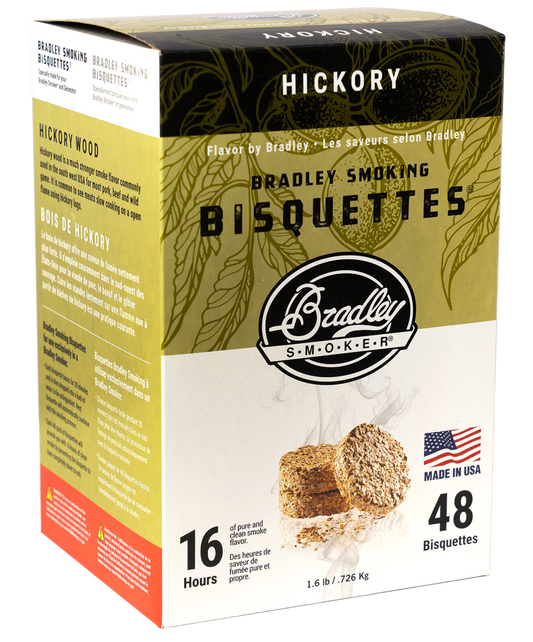
The strong and sweet flavor of Hickory Bisquettes make it one of the more popular woods for smoking, and especially pairs well with poultry, beef, pork, game, water fowl, nuts, and cheese.
Shop Now

